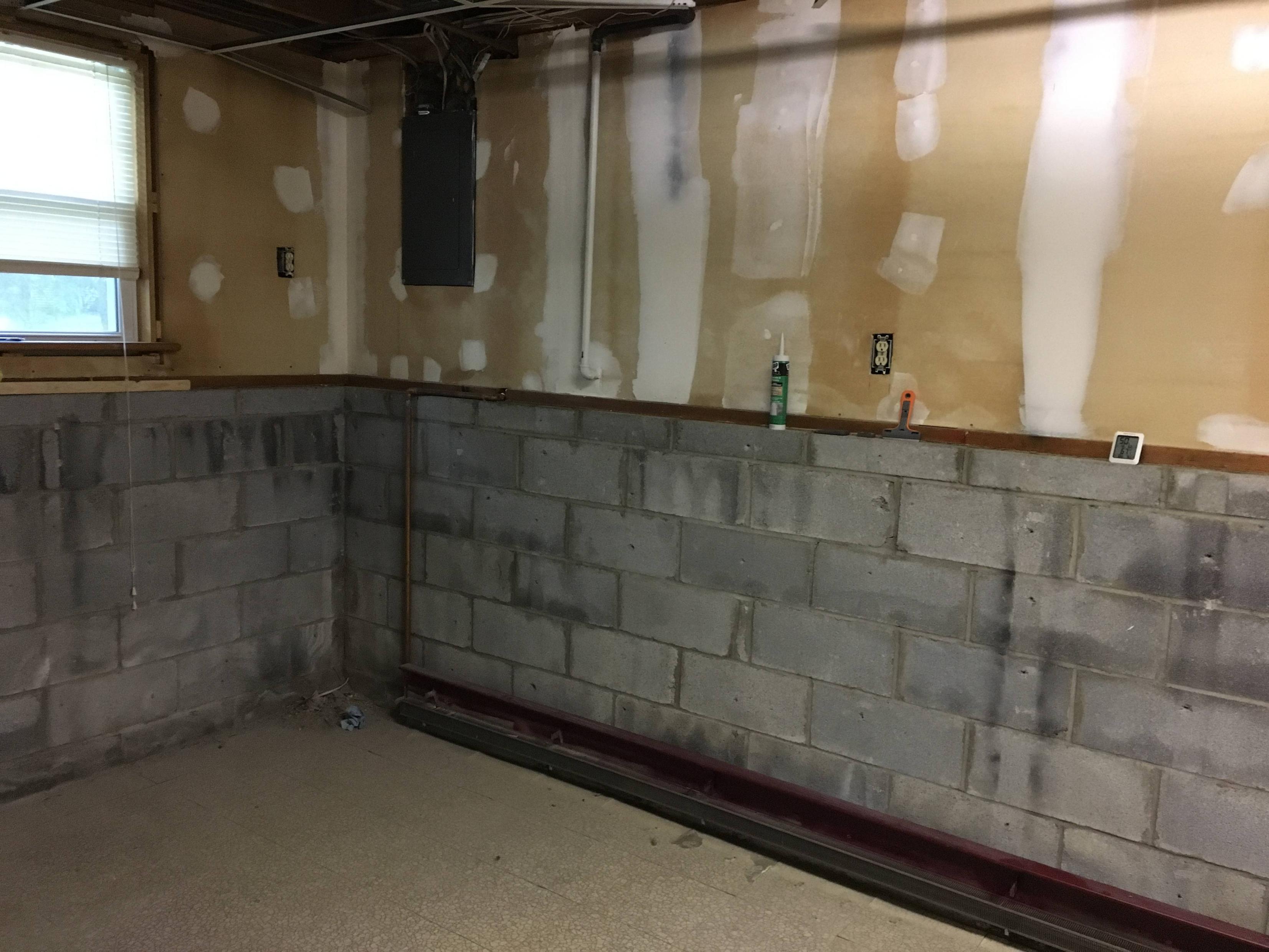Not sure what to do
Details: We've recently moved into our first home, a split-level home in Upstate New York (Climate Zone 5 & 4 Marine). The lower level has 3 main rooms, a playroom, laundry room and man cave, all of these rooms have some level of finishing, but I'll just focus on the playroom.
Playroom: Dimensions: 22' x 16' Floor: Concrete, Glued Vinyl on top, (Use to have Carpet) Walls: 3 exterior walls partially below ground (concrete block is ~4'2", however only about 2.75-3' is below ground), above ground is finished with drywall and electrical. On top of the drywall and concrete was panel board (the concrete had furring strips to which the panel was attached). Windows: 3 Ceiling: Drop-ceiling Addl: This room also has a closet for Plumbing, Water Heater, etc…
The Laundry Room: Dimensions: 16’ x 11’ Floor: Concrete, Carpet on top (no underlayment or anything else) Walls: 1 exterior wall partially below ground dimensions same as other room also the concrete was painted White, 1 exterior completely above ground with entry door, 2 interior Drywalled with electrical Windows: 2 Ceiling: Drywall Addl: Washer/Dryer hookup
Man Cave: Dimensions: 22’ x 10’ Floor: Concrete, Carpet Walls: 1 exterior wall partially below ground with insulation between a brick wall, 1 exterior completely above ground, 2 interior drywalled with electrical (also had reclaimed wood paneling installed over the drywall) Windows: 2 Ceiling: Drywall
Problem: This past Spring and Summer I’ve been told has been really rainy and pretty warm. We didn’t run a dehumidifier down in the basement (first time home owners :) ) and noticed white mold in 2 of the 3 rooms and efflorescence in 2 of the rooms.
In the playroom, there was white mold growing on the toys and kids furniture and it also smelled very musty. The paneling on one part of the wall also started warping. We pulled up the carpet and tore down the paneling and noticed efflorescence at the bottom (~3-6” up) of the all 3 exterior walls. We also noticed that two of the drywall panels on the interior walls (towards the bottom) had black mold on them.
In the Man Cave, we took down the paneling (didn’t want the look) and didn’t notice any mold on the drywall underneath.
In the Laundry room, there is a little efflorescence in the corner of the exterior wall (that’s below ground), It pushed through the paint.
Question: WouldWe had two basement companies come and evaluate and they said that it would probably be enough to clean the efflorescence and applyingapply Drylock, and then put drywall overto help with the top (with furring strips) or should would something more comprehensive be needed? (A basement specialist company saidmoisture coming through the walls. Would this solution, could be enough for my home)? Do I also need to insulate? I would like to put drywall over the brick, just trying to figure out the best way to do that to prevent moisture, mold, insulation problems.
Thanks,

